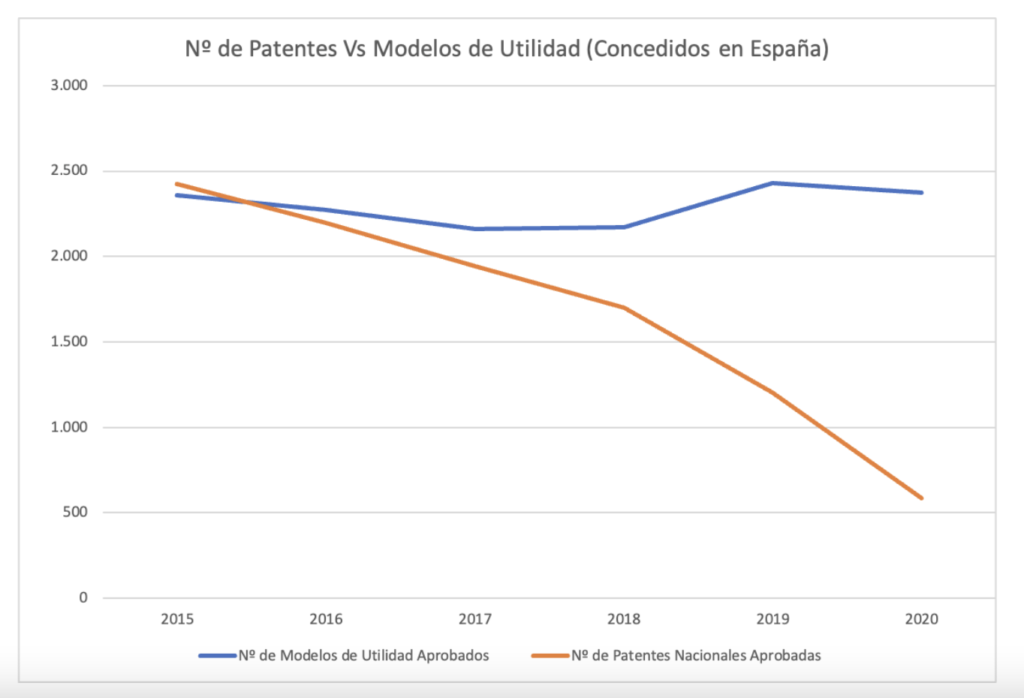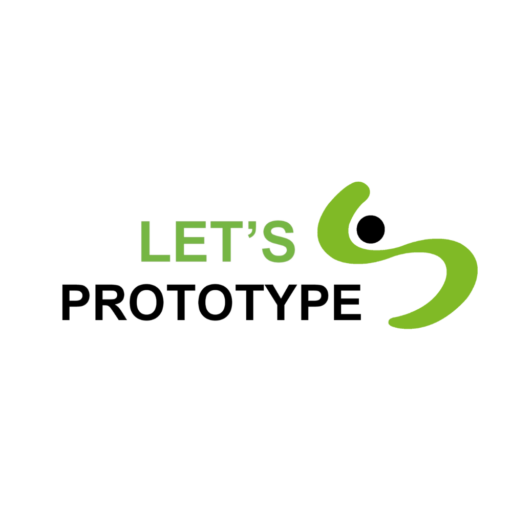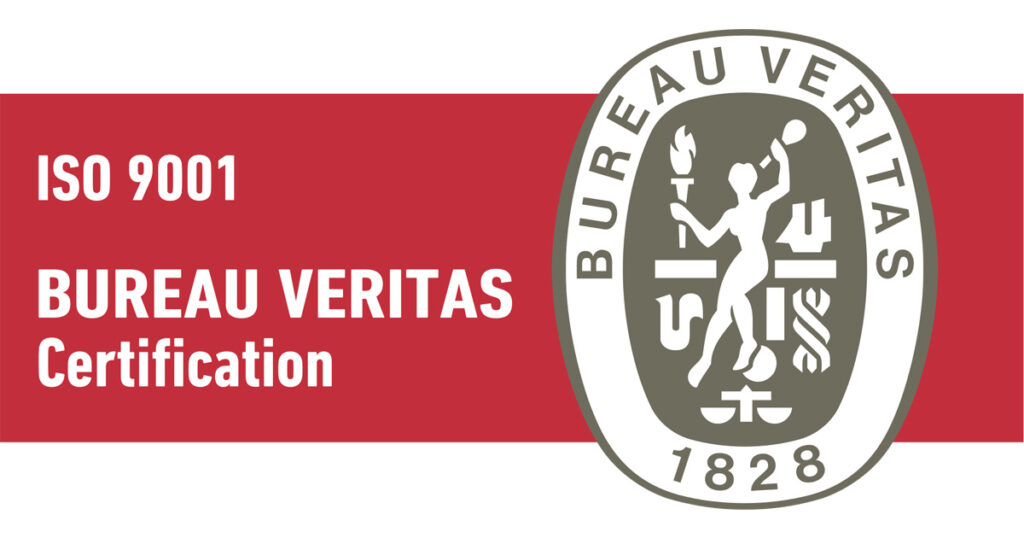Register a Register a Utility Model
The utility model is not a patent. It is a weak protection method chosen in 80% of cases, by mistake.
-
Let's talk about your invention
Book Appointment
-
Inventor's Guide
Get your Guide now
What is a utility model?
The Utility Model is a widely used invention protection tool among the inventor community in Spain. It is a protection method designed for products with low levels of innovation, where small changes are made to existing elements.
The main difference of the utility model compared to other strong protection methods is that the utility model does not require a substantive examination.
Any invention intended to be protected with a utility model must be documented and published. If no third-party oppositions arise, the utility model title will be granted. The chances of a utility model being defensible are limited, which is why it is not a recommended method if the goal is to sell a patent.
Why is the utility model so common among inventors?
Below is the graphical representation of the No. of approved patents vs No. of approved utility models.

The chances of obtaining a Utility Model are much higher compared to the opportunity to register a patent.
The ease of obtaining a utility model and the low level of innovation required to obtain it mean that large companies and investors show little interest in buying utility models.
Most inventors choose to register a utility model for three reasons:
- They are not well advised.
- They don't have the resources to protect their inventions.
- They mistakenly believe they can sell their idea protected with a utility model.
Differences between patents and utility models.
Although the names are very similar, there are significant differences between a Utility Patent and a Utility Model.
To grant a patent, a substantive examination is required. In the case of a Utility Model, the level of scrutiny is much lower. For this reason, there are many countries, such as the United States, that do not allow the registration of Utility Models.
Criteria | ||
Duration | 10 Years | 20 Years |
Innovation requirements | Weak | Strong |
Approval process | Does not require substantive examination | Requires substantive examination |
Taxes | 86€ | 1200€ |
Market Price | Between 1500€ and 3000€ | Between 7000€ and 15000€ |
Approval likelihood | 88% | 48% |
Ease of internationalization | – | + |
Sales posibility | 10% | 90% |
Protecting an idea to sell it
Many inventors consider registering their idea as a strategy to sell it. The truth is that the chances of finding a buyer for a Utility Model are extremely low.
Since it is an invention protection method not accepted in countries like the United States, the chances of interest from companies or patent buyers are reduced by more than 80%.
What is the utility model used for?
According to our experience, the utility model is useful in cases where the product you are marketing is very similar to other patented products.
If you receive a claim, you could gain additional time to keep marketing the product until the legal issue is resolved.
In this case, if you don’t have at least a utility model, they could order your product to be withdrawn from the market before the legal issue is resolved.
Approval probability of a utility model in Spain
Approval likelihood | 2020 | 2021 | 2022 | Average |
97,39% | 99,70% | 93,63% | 96,91% | |
69,41% | 107,49% | 87,06% | 87,98% | |
39,65% | 49,30% | 54,10% | 47,68% |
As you can see, taking as a reference the approval rates for Invention Patents (47%), Industrial Design (97%), and Utility Model (88%), you’ll find a clear answer as to why most intellectual property advisors almost always recommend the Utility Model as a method to protect an invention.
The Utility Model is the invention protection method with the highest profit margin for intellectual property advisors. Likewise, it is much more likely that the Patent and Trademark Office will approve a Utility Model than an Invention Patent.
The likelihood that the Patent and Trademark Office will grant Utility Model titles is very high. This probability is linked to the low level of scrutiny applied when evaluating a Utility Model, as a substantive examination is not required.
To apply for a Utility Model, it is necessary to write a descriptive report of the invention. If the invention report meets the formal requirements set by the Patent Office, the invention will be published in the Official Bulletin of Patents and Trademarks. If no inventor or company files an opposition within 60 days of publication, the Utility Model will be approved. However, this does not mean that the Utility Model can later be converted into an Invention Patent.
How much does it cost to register a utility model?
The price of a utility model is the sum of: official fees and advisor fees.
- The administrative fees to file a utility model cost €101.38.
- Market price for advisors to draft a utility model: €1000
In Spain, a utility model usually costs between €1,500 and €3,000.
That's right. Applying for a utility model for an invention is actually quite cheap.
The difference between the official fee and the total cost of a utility model lies in the fees charged by the patent attorney or advisor.
The utility model is NOT a precursor to a patent.
No. Registering an invention as a utility model does not mean you have a patent. Nor does having a utility model title mean that your invention can be patented at any point in the future.
Common errors in the management of Utility Models
Not thoroughly researching prior art.
If you've been told that nothing similar to your invention exists, it's likely that your invention is not viable — or that not enough research has been done. In 99% of cases, there is prior art that must be studied before creating a protection strategy.
Registering a utility model because it’s easy and cheap
80% of utility models could actually be patented. Inventors choose to register a utility model either because they are not well advised or because they lack sufficient resources.
Therefore, most advisors recommend the utility model as the first option because they know they would lose a large part of their sales otherwise.
Choosing the wrong timing
Registering a utility model too early carries more risks than benefits. If you register a utility model before building a prototype, you will be sharing your idea without having optimized the solution.
Choosing the wrong protection method
As you may have concluded by now, for intellectual property advisors or patent attorneys, it will always be easier and more financially attractive to file a Utility Model rather than a Patent or Industrial Design. Therefore, if the improvements you propose to an invention are related to its shape or aesthetics, it may be more advisable to protect an invention through an Industrial Design.
Questions about Utility Model
When you have an idea that improves an existing product, but the innovation is not too relevant, it is likely that the Utility Model is the best way of protecting the invention. If you are selling your product and it closely resembles a product that is patented or registered as an Industrial Design, it is likely that the judge will refrain from issuing precautionary measures until a final decision is made. Specifically, the main advantage of having a Utility Model is being able to take advantage of time, selling products, until a decision is made in a patent dispute. If your intention is to protect the invention from being copied, internationalize the sale of a novel or improved product, or you intend to sell an invention to a large company or sell a patent to an investor, registering a Utility Model is highly unadvisable.
Due to the internationalization process and recognition of the method worldwide, for the protection period it offers, and for the rigor of the examinations required for approval. It is more advisable to protect an invention with a patent than with a Utility Model.
The rigor of the examinations to approve a Utility Model and an Industrial Design are very similar. In both cases, the patent office is limited to ensuring compliance with document forms, but does not assess the innovation capacity of the registrations. However, Industrial Design has greater international recognition than Utility Models. Additionally, considering the official fees of the patent office along with the fees typically charged by intellectual property advisors, registering an industrial design is usually almost 2 times cheaper.
The Utility Model is a fairly straightforward process. From submission to approval of a Utility Model, it takes approximately 3 months, including the period for exposure of the Utility Model in the Official Gazette of Patents and Trademarks. The process of exposing a Utility Model takes about 60 days. This is the period during which other inventors may oppose the approval of a Utility Model if it bears resemblance to their previously protected inventions.
According to our experience, many inventors who register a Utility Model, subsequently do not maintain a surveillance service of their protected inventions, as substantive examination is not necessary to protect the Utility Model, often, very similar or even nearly identical registrations can be detected at the patent and trademark office.
The price of registering a Utility Model is not particularly cheap. The cost of the Utility Model consists of the sum of the official fees imposed by the patent and trademark office plus the fees of the intellectual property advisors. The fees are approximately 120€, so the cost of filing a Utility Model typically ranges from 120€ to 2000€ or 3000€, which is the economic margin of the advisors who handle this type of advice. While the prices of a Utility Model are lower than patent prices, for intellectual property advisors, they are a much more profitable method, as they require less effort to prepare while the possibilities of applications are substantially higher, as you can see in the comparisons presented above.
The Utility Model is a method of protecting inventions with low rigor in terms of innovation and low rigor in its examination procedure by the patent and trademark office. This low rigor is well known to large companies and patent buyers, so in most cases, according to our experience, it is cheaper and more viable for a company to improve the content or the invention of a Utility Model than to buy it. Based on our experience, patent buy-sell operations are conducted on patents with clear opportunities to be internationally protected. If the inventor's strategy is to protect an invention and then sell the patent, it is advisable to invest time and effort in protecting a utility patent instead of a Utility Model
The protection period of a Utility Model is also shorter than the protection period of a patent. This is another clear argument for choosing a patent when the strategy is to negotiate with patent buyers to monetize an invention.
Bringing an invention to the market and succeeding is neither easy nor accidental
After working closely with over 500 inventors from Spain and the United States, we have prepared an inventor training program, specially tailored for you.
Inventor Training:
Program:
Program: Patent your Invention
The time to bring your ideas to life is now. We accompany you throughout the entire process: from idea to product.
San Juan Ingenieros, S. L, is the owner of the domain www.letsprototype.com, and in accordance with the General Data Protection Regulation (EU 1679/2016), we will process your data exclusively to handle your information request. You have the right to rectify or request the deletion of your data at any time via hello@letsprototype.com.

